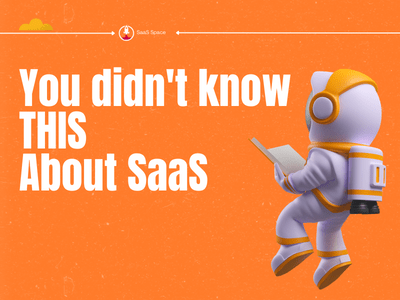In the fast-paced world of SaaS startups, legal risks don’t always announce themselves. Many founders are too focused on building products and chasing growth to notice small cracks forming in their governance or financial practices. But when those cracks widen, the consequences can be severe—including the disqualification of a director.
Director disqualification is a legal penalty that strips an individual of their right to act as a company director for a defined period. It’s not a hypothetical. It happens. And for SaaS CEOs—who often juggle finance, compliance, investor relations, and operations on their own—the risk is real.
This article breaks down why SaaS CEOs are especially vulnerable, what the disqualification process actually involves, and how founders can protect themselves with good habits, legal awareness, and the right tools.

Real Cases: Why SaaS Founders Face Higher Risk of Disqualification
This isn’t just a theoretical issue. Disqualification happens to real startup founders. It tends to hit those in early growth stages—often before they’ve built strong finance teams or legal support.
SaaS CEOs are at risk for several reasons. Many work inside thinly staffed teams. They may have product-market fit but operate without a formal CFO or legal advisor. Revenue is often subscription-based, making short-term cash flow difficult to manage. When taxes, payroll, or investor updates slip through the cracks, that’s when the trouble starts.
Common scenarios where founders get into trouble include:
- Spending incoming revenue on product development while delaying HMRC payments
- Filing late or incomplete annual returns to Companies House
- Failing to document board decisions or investor communications
- Making verbal promises to investors without follow-up documentation
- Operating while technically insolvent without understanding the legal implications
Each of these scenarios can spiral into a formal investigation—either from the Insolvency Service or a creditor—and ultimately lead to disqualification.
If you’re the CEO, that’s your name on the record. And once disqualified, you’re not just out of your current company. You’re locked out of every boardroom in the UK and potentially across the EU as well.
Director Disqualification Process: How It Works for SaaS Executives
Disqualification happens under the Company Directors Disqualification Act 1986. It’s most commonly triggered by an Insolvency Service investigation after a company goes under. But it can also be initiated through complaints from creditors, former employees, or even investors.
Once the investigation starts, the Insolvency Service looks for evidence of unfit conduct. This can include:
- Failing to keep proper accounting records
- Not filing statutory documents
- Trading while insolvent
- Misleading stakeholders
- Withholding tax payments
- Fraudulent or wrongful trading
If the case is strong, the director will receive a formal notice outlining the intention to seek disqualification. The director can then either contest it in court or offer a “disqualification undertaking,” essentially accepting the ban without a court hearing. The period can range from 2 to 15 years depending on severity.
During that time, the individual cannot:
- Form or manage a UK company
- Be involved in company promotion
- Instruct others to act on their behalf
- Sit on a board in the UK or EU
And yes, even instructing someone else while disqualified is a criminal offense.
There is a legal mechanism—Section 17 of the CDDA 1986—that allows a disqualified director to apply for permission to remain active under specific, court-approved conditions. But those are rare and require strong evidence that the director poses no ongoing risk. The UK Government’s official guidance outlines the process and consequences of disqualification for company directors.
Why SaaS Startups Are Especially Vulnerable to Legal Compliance Failures

Compared to leaders in more traditional industries, SaaS founders often work without legal buffers. A retail CEO might have a legal department and experienced board to back them. In SaaS, the founder often is the board, the finance lead, and the head of operations.
Many SaaS platforms have high burn rates and complex ownership structures, especially during rapid growth. It’s easy to miss a filing deadline or operate in technical insolvency without knowing it. A missed VAT payment may seem minor in the short term—but in the eyes of regulators, it’s misconduct.
What makes this space particularly vulnerable is the lack of structure. There are plenty of tools to manage customer data or code deployment. Far fewer help you maintain compliance, protect against legal gaps, or prove that you acted responsibly when the spotlight turns your way.
This is not about comparing one software provider to another. It’s about recognizing a structural disadvantage—and addressing it before it’s too late.
Must-Have Legal Compliance Tools for SaaS Companies
These are the safeguards SaaS CEOs need to have in place:
- Real-time cash flow tracking (using tools like Xero or QuickBooks)
- Scheduled compliance checks tied to Companies House and HMRC requirements
- Automated reminders for tax, payroll, and board meeting filings
- Templates for board resolutions and investor updates (platforms like BoardEffect are especially useful for managing this)
- Audit-ready storage of financial and governance records
- Legal checklists and ready-made contracts (available through services like SeedLegals)
- Alerts for missed deadlines that could trigger investigations
You don’t need dozens of disconnected systems. You need one clear workflow that puts legal compliance next to financial data. That makes mistakes visible before they escalate.
Building Investor Trust: How Legal Transparency Impacts SaaS Funding
Legal issues aren’t just internal problems. They immediately affect how investors view your company—and you.
Before committing funds, venture capitalists and angel investors routinely dig into a founder’s background. They don’t just look at the business—your track record matters too. Any hint of past disqualifications or legal trouble can immediately cast doubt on your ability to lead, raising concerns about how the company is being managed.
On top of that, it’s common for funding contracts to include specific terms that require full disclosure of any legal issues. If a founder leaves something out—intentionally or not—it can violate those terms and, in some cases, cost the company its funding altogether.
Even outside of legal requirements, disqualification damages trust. Startups run on momentum and confidence. If an investor starts second-guessing your judgment—or your legality—they won’t be around for the next round.
The solution isn’t over-disclosing, but maintaining transparent, structured communication. Send regular financial updates. Log your board decisions. Inform your investors early if a legal issue arises. Let them help you navigate it. They’d much rather solve a small issue now than a scandal later. For a deeper understanding of how company insolvency can impact directors, see ICAS’s director obligations guide.
Early Legal Warning Signs SaaS Founders Should Never Ignore
Most disqualification cases could have been prevented if early signs weren’t ignored. Founders should treat the following as red flags:
- Repeatedly delaying payroll or tax payments
- Relying on invoice financing month after month
- Missing multiple Companies House filing deadlines
- Operating with negative cash flow while still trading
- Not recording board decisions or investor agreements
When these things show up, don’t guess. Bring in legal or financial advisors. Document your actions. Put all decisions in writing. Start an internal audit. If you can prove responsible leadership, you have a chance to de-escalate any legal inquiry.
What to Do If You’re Facing Director Disqualification as a SaaS CEO

Step one: get legal advice immediately. Don’t write anything informal or try to explain it away yourself—anything you send can be used as evidence.
Step two: gather evidence that shows you acted in the company’s best interest. This includes meeting minutes, financial records, compliance history, and any proof that you tried to solve the issues.
In some cases, you can negotiate a disqualification undertaking that shortens the penalty period or lets you apply for limited company involvement. But this only works with legal support. Don’t go solo. In some cases, you may be able to apply for leave under Section 17 of the CDDA 1986 to continue acting as a director under court-approved conditions. But it’s a high bar, and the court has to believe you’re essential to the business’s survival without posing future risk. The Law Society’s company director resources offer further guidance on legal duties and protections.
How SaaS Founders Can Rebuild After Director Disqualification
Disqualification doesn’t end your career—it just pauses your legal authority. Many founders use that time to gain new certifications, consult for other companies, or contribute in non-director roles.
Some start speaking publicly or publishing lessons learned. Others work behind the scenes in startup ecosystems, mentoring founders or helping with strategy. These aren’t just resume fillers—they show accountability, learning, and responsible behavior.
In time, with a clean track record and the right evidence, you may be allowed to return to formal leadership roles. But only if you’ve shown change and stayed within legal boundaries.
Final Thoughts: Preventing Director Disqualification in SaaS Startups
SaaS founders carry more legal exposure than most realize. Not because they’re reckless—but because they’re stretched. Director disqualification is serious, but it’s also avoidable. It usually stems from poor documentation, missed deadlines, or trading in the dark financially.
The right way forward isn’t panic—it’s structure. Keep clean financial records. Stay ahead of filings. Communicate openly with your board and investors. Get legal support early, not after the damage is done.
Disqualification doesn’t just remove a CEO—it destabilizes a company. If you want to protect what you’ve built, start acting like a director the law expects you to be.
Take note that this article is strictly informational, and as such, should not be considered legal advice. If you’re facing potential disqualification or require legal clarity, consult with a solicitor experienced in director liability and corporate governance.
- Top 10 Best Sites to Buy Quora Upvotes - September 3, 2025
- How New Technology Is Changing the Face of Customer Support - August 18, 2025
- How SaaS Tools Are Streamlining Contractor Operations - August 14, 2025


